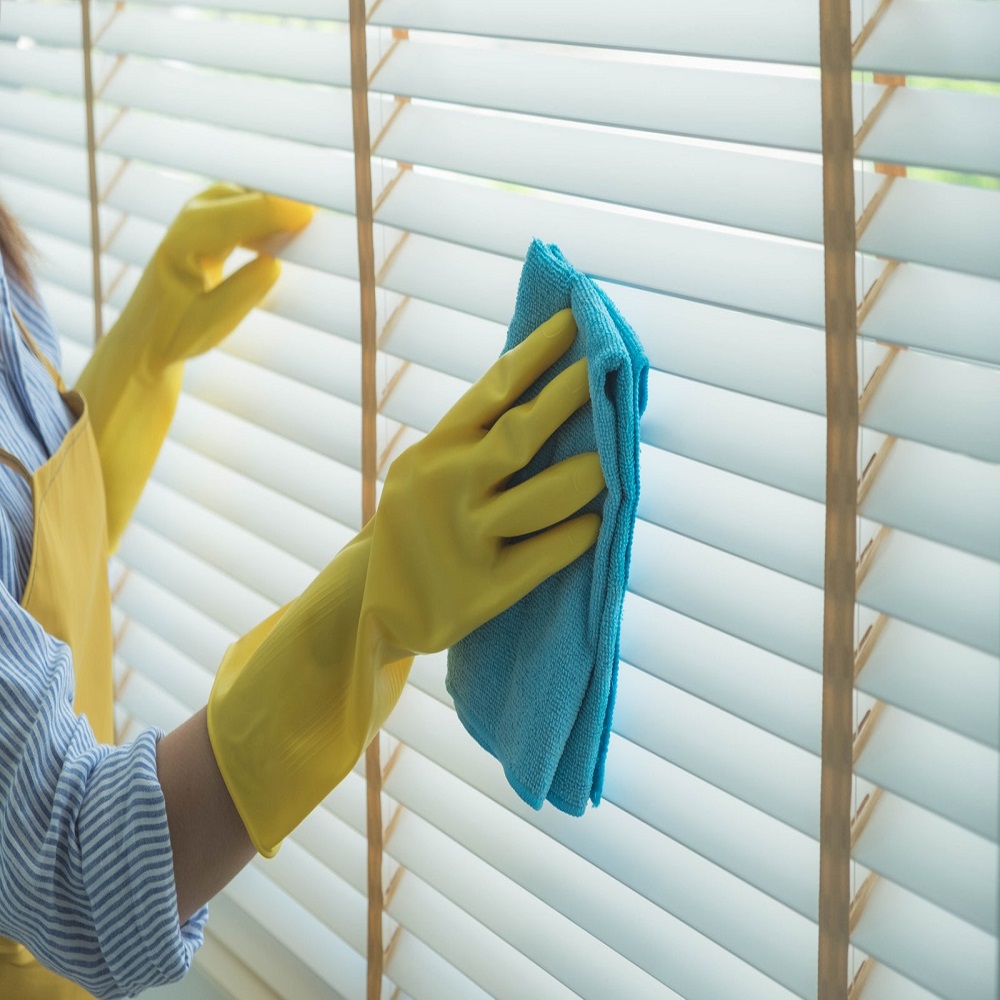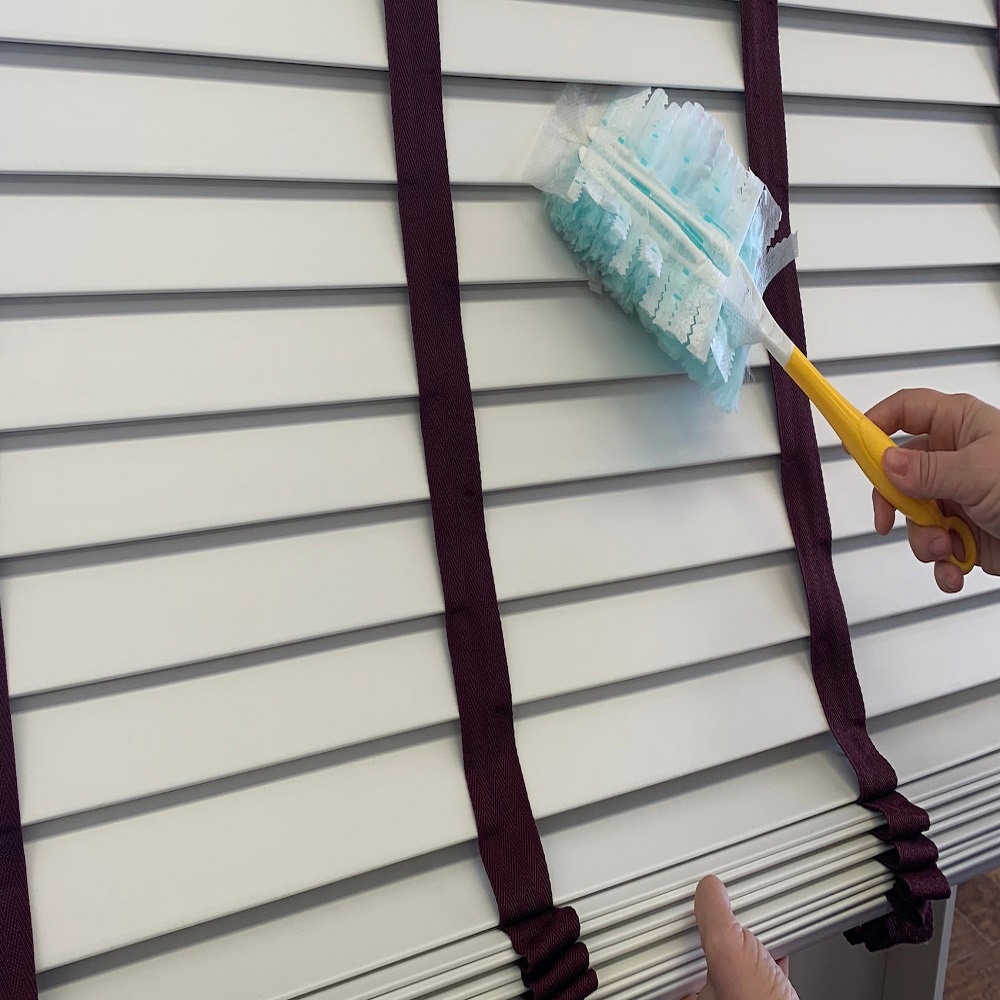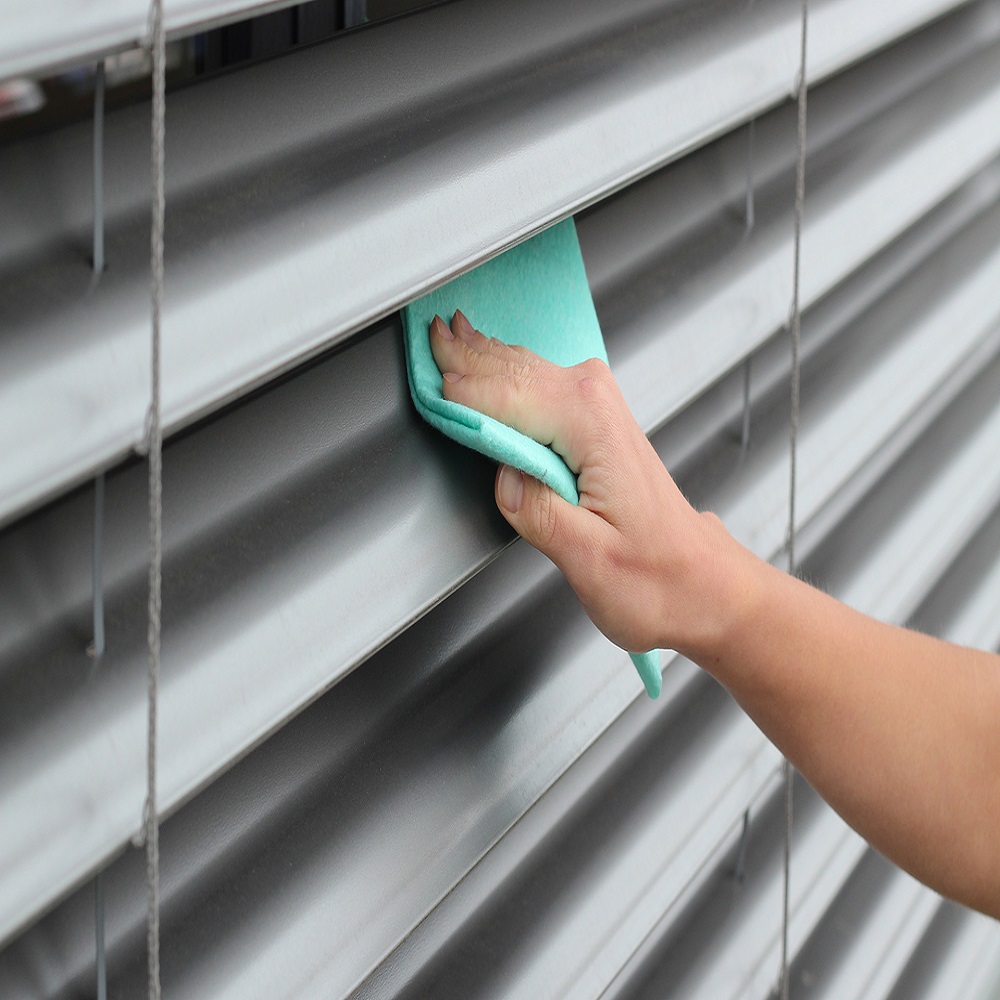Introduction
How to wash blinds – Cleaning blinds may seem like a tedious chore, but with the right approach and tools, it can be done efficiently and effectively, leaving your windows looking pristine. Whether you have vinyl, aluminum, wood, or fabric blinds, each material requires specific care to maintain their appearance and longevity. Below is a comprehensive guide on how to wash different types of blinds.
Gather Your Supplies
Before you start, ensure you have all necessary supplies:
- Microfiber cloths or soft dusting cloths
- A vacuum cleaner with a brush attachment
- Mild detergent or a suitable cleaner for blinds
- A bucket
- Warm water
- A sponge or soft brush
- A step ladder or stool (if needed)
- Towels or a drop cloth
Dusting the Blinds
- Close the Blinds: Begin by closing the blinds completely to expose one side.
- Dust Off Loose Debris: Use a microfiber cloth or a duster to gently wipe down each slat. For mini-blinds, a vacuum cleaner with a brush attachment can be effective in removing loose dust.
- Flip and Dust Again: Open the blinds in the opposite direction and dust the other side.
Preparing the Cleaning Solution
- Mix the Solution: Fill a bucket with warm water and add a few drops of mild detergent. Avoid harsh chemicals, as they can damage the blinds.
- Test First: If you’re unsure about the cleaner’s effect on your blinds, test it on a small, inconspicuous area first.
Cleaning Different Types of Blinds
a. Fabric Blinds:
- Spot Clean: For fabric blinds, use a sponge or soft brush dipped in the cleaning solution to spot clean any stains or marks.
- Gentle Wipe: Lightly wipe each slat with the damp sponge, avoiding soaking the fabric. Excess moisture can damage fabric blinds.
- Rinse: Wipe the blinds with a clean, damp cloth to remove any soapy residue.
- Dry: Allow the blinds to air dry completely before raising them.
b. Vinyl or Plastic Blinds:
- Soak and Wipe: Soak a sponge in the cleaning solution and wipe down each slat. For stubborn stains, use a soft brush.
- Rinse: Use a clean, damp cloth to wipe away soap residues.
- Dry: Dry the blinds with a towel or let them air dry. Make sure they are completely dry before closing them to prevent warping.
c. Wooden Blinds:
- Dust First: Dust wooden blinds as described above.
- Clean with Care: Use a slightly damp cloth with a bit of wood cleaner or a mixture of water and vinegar. Avoid soaking the wood.
- Wipe Dry: Immediately wipe off any moisture with a dry cloth to prevent damage to the wood.
d. Aluminum Blinds:
- Wipe Down: Use a damp cloth or sponge with the cleaning solution to wipe the slats. Aluminum is more durable and can handle a bit more moisture.
- Rinse and Dry: Wipe the blinds with a clean damp cloth to remove residue and dry with a towel.
Final Touches
- Reinstall and Adjust: If you removed the blinds for cleaning, reinstall them carefully and adjust them to their original position.
- Inspect: Ensure that all parts of the blinds are dry and free from cleaning solution residues.

Vinyl or Aluminum Blinds
Vinyl and aluminum blinds are common in many households due to their affordability and durability. They are relatively easy to clean.
Materials Needed:
- Soft microfiber cloth or duster
- Bucket of warm water
- Mild detergent (dish soap works well)
- Sponge or soft brush (an old toothbrush for hard-to-reach spots)
- Clean, dry towel
- Drop cloth or towel to protect the floor
Steps:
- Remove Excess Dust: Start by closing the blinds and using a microfiber cloth or duster to wipe off any loose dust from both sides of the slats. You can also use a vacuum cleaner with a brush attachment on a low setting for a more thorough cleaning.
- Prepare Cleaning Solution: Mix a small amount of mild detergent with warm water in a bucket. Avoid using harsh chemicals as they can damage the finish of the blinds.
- Dip & Wipe: Dip your sponge or soft brush into the soapy water and gently rub each slat, starting from the top and working your way down. For stubborn stains, let the solution sit for a few minutes before wiping.
- Rinse & Dry: Use a clean, damp cloth to rinse off the soap, being careful not to leave watermarks. Alternatively, you can take the blinds outside and hose them down if weather permits. Finally, dry each slat with a clean towel to prevent water spots.
- Rehang & Finish: Once completely dry, rehang the blinds and give them a quick once-over with a dry cloth to ensure they’re spotless.
Wood Blinds
Wooden blinds add warmth and elegance to a room but require gentler handling during cleaning to preserve their finish.
Materials Needed:
- Soft microfiber cloth or duster
- Wood cleaner or a mixture of equal parts vinegar and warm water
- Soft-bristled brush or microfiber cloth
- Towel
Steps:
- Dust Carefully: Using a soft cloth or duster, gently wipe each slat to remove dust. Avoid using a vacuum cleaner with a brush attachment as it could scratch the surface.
- Clean with Wood Cleaner: Dip a soft-bristled brush or cloth into the wood cleaner or vinegar solution and lightly clean each slat. Wring out excess moisture to prevent soaking the wood.
- Dry Immediately: Use a clean, dry cloth to immediately wipe each slat dry after cleaning. This step is crucial to prevent water damage or warping.
- Polish (Optional): For an extra shine, you can apply a wood polish with a soft cloth following the manufacturer’s instructions.
Fabric Blinds
Fabric blinds, such as Roman shades or cellular shades, need more delicate care to avoid damaging the material.
Materials Needed:
- Vacuum cleaner with a brush attachment
- Mild detergent
- Sponge or soft brush
- Bucket of cold water
- Towel or drying rack
Steps:
- Vacuum First: Using the brush attachment on your vacuum cleaner, gently go over both sides of the blind to remove loose dirt and dust.
- Spot Clean: For stains, mix a small amount of mild detergent with cold water. Dampen a sponge or soft brush with the solution and gently rub the affected area. Be careful not to soak the fabric.
- Rinse & Dry: If the fabric allows, rinse the cleaned area with a damp cloth and cold water. Avoid getting other areas wet. Lay the blind flat on a clean towel to air-dry or use a drying rack. Do not hang back until fully dry to prevent mold growth.
Tips:
- Always check the manufacturer’s cleaning instructions before starting to avoid damaging your blinds.
- Regular dusting can significantly reduce the need for deep cleaning.
- For high or hard-to-reach windows, consider investing in a telescoping duster or盲cleaning tool.
- To keep your blinds looking fresh, consider cleaning them at least once every three months, or more frequently in dusty environments.
By following these steps and tips, your blinds will not only look clean and refreshed but will also last longer, enhancing the beauty of your home.

Additional Tips
- Regular Maintenance: Establish a regular cleaning schedule based on the type of blinds and the amount of dust in your home.
- Professional Cleaning: For delicate or high-end blinds, consider professional cleaning services to ensure they are handled correctly.
- Replacement Parts: If blinds are damaged or missing parts, consult the manufacturer for replacement or repair options.
Conclusion
By following these guidelines, you can keep your blinds clean and in good condition, enhancing their appearance and extending their lifespan. Regular maintenance not only improves the look of your blinds but also contributes to a cleaner and more comfortable living environment.
